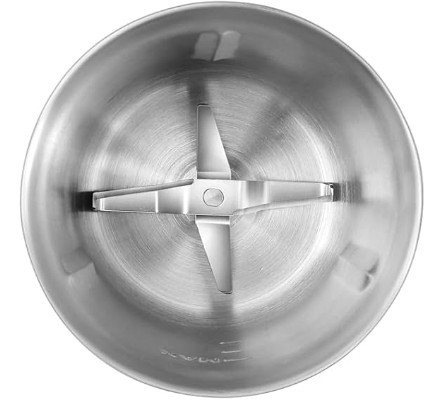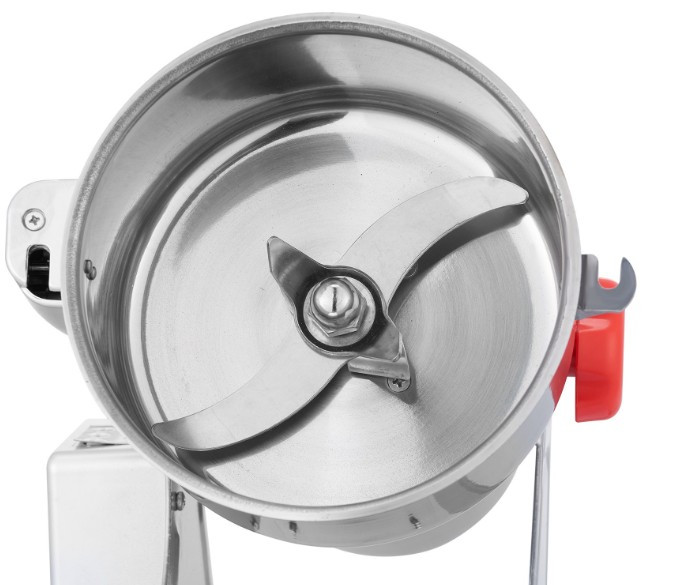I want to save a section here for my experience with all of the various equipment used to reduce the particle size of incense ingredients. This is a work in progress, maybe for a long time. PLEASE do offer any corrections or content to add. Feedback is a gift!
About me: I’ve used incense since high school, but in 2021, my wife introduced me to incense made with natural ingredients from her village in Cambodia (Han Chey, Kampong Cham). They gather locally sourced materials from the rainforest, gardens, and farms. After experiencing this natural incense, I was hooked, and we started a business after encouragement from family and friends.
One of our first challenges was finding pre-powdered ingredients, and we soon realized they had weaker fragrance. By grinding our own, we made the incense smell better and saved on material costs. That’s when the adventure began.
OF NOTE:
The world of taking things and making them smaller is typically referred to as particle reduction. Particle reduction is a huge industry that touches everything. From pharmaceutical companies to landscape companies. It's all around you from visiting a local coffee shop to the cosmetic products you use in your home. Unfortunately there exists a gap between the consumer/small business world and the industrial/commercial world with some grinding equipment.
Some grinders excel with some materials while they might be terrible with other types of materials.
GRINDER CHALLENGES:
Here is a short list of challenges we face with particle reduction:
Heat - Too much heat will reduce the fragrance potency of the material you are grinding. I suspect different ingredients have different temperatures in which the ingredient will begin to lose it's potency. I have not tested this.
Labor - The less ingredients the grinder can output or the greater amount of time needed to grind the material can result in higher labor requirements. In almost all cases, grinders need to be attended to and will not do the work without your presence. It's also dangerous to leave grinders alone due to heat concerns.
Mess - Some grinders produce clouds of particles that settle onto everything in your work area. While others keep the process sealed up. Unloading the material can be a messy endeavor.
Cost - Grinding equipment can cost you as little as $10 for a coffee grinder at your local thrift shop to many thousands of dollars for commercial or industrial grinding equipment.
Material Types - Some materials such as resin or materials that contain high resin/oil content can be tricky to grind. Introduce heat and you have a very sticky mess with resin. Materials with high oil concentration can clump up and get stuck to the walls/floor of your grinder. They require additional cleaning.
MATERIAL CHALLENGES:
Some plants are very easy to grind while others will have you ripping your hair out. Let's go over the challenges we find in materials.
High fiber - Materials high in fiber like wood (especially hard woods) or even leaves that contain little sticks and twigs (like Patchouli or White Sage) will be very difficult to grind.
Oil - Plants that contain a lot of oil will clump up and cause issues like sticking to the walls of your grinder. Cloves are a good example of this
GRINDER TYPES:
Note: I am approaching the equipment as a small business consumer. I am keeping it under $500 and in a non-commercial / non-industrial classification.
Blade Grinders - This is most common for inexpensive coffee grinders or electric grain mill grinders . Sharp or dull blades cut through the material to reduce particle size.
Hammer Mill - A blunt force grinder where the cylinder/chamber where the grinding occurs contains one or more hammers which spin at high speeds. The hammers are extremely close to the walls of the chamber and those walls will have ridges on them to direct the material down/up.
Burr Grinder - A moving grinding wheel that crushes the material between the wheel and very tight walls inside the grinding chamber.
Ball Mill - A hollow drum where you place the material inside along with balls. You then place the drum into a belt driven rotation platform. The drum is spun at lower speeds until the balls crush the material into the desired particle size.
Mortar and Pestle - An ancient method of crushing materials in a bowl (mortar) typically made of rock or concrete with a club (pestle) creating a crushing pressure between the two tools.
GRINDER TYPES PRO/CON

Blade - Coffee Grinder
Cost: $10-$50
Description: These are electric coffee grinders that use blades to grind coffee. Many of them will indicate they can be used to grind spices as well. Generally I put these into two categories
(1) Stationary container where the entire grinder is a single body and you cannot remove the container/cup/hopper where the material is ground up.
(2) A removable container/cup/hopper.
Pros: Inexpensive. A great way to not only do a quick grind, but also can be used as a quick mixer of combined ingredients. I always suggest garage/yard sales or thrift stores for these. Great for someone starting out in the incense world. The removable cup version makes cleaning between uses easy!
Cons: Very low capacity. Will not typically grind wood. Has the same heat issues experienced with other blade grinders. The non-removable cup version is a challenge to clean especially where water is involved.
Tips: I still use mine for mixing ingredients quickly. Especially where some ingredients like to clump up. When I experiment with a new ingredient and want to quickly grind up 25g of something, this is my go-to. Removable cup version is more expensive but they usually come with a spare cup. Swapping between ingredients without having to clean out the 1 cup is nice. Washing difficult ingredients or washing in a dishwasher is great with removable cups.

Blade - Electric Grain Mill Grinders
Cost: $50- $300
Description: There are many of these found on Amazon, eBay, AliExpress, or the like. Typically referred to as electric grain mill grinder they can range in price depending on capacity. Today I see $48 USD for a 150g grinder to $150 for the 800g model.
Pros: Medium to high capacity. Low cost options exist. If powerful enough, it can grind most materials including hard woods or oily materials. Grinds quickly and with great force. Typically sold with an extra set of blades and a fuse.
Cons: The motors tend to be powerful and the blades move very fast creating a lot of friction. This leads to very fast heat buildup. Unfortunately, the design places the electric motor close to the grinding tub which also contributes to faster heat buildup. It's also very loud.
Tips: Managing heat is going to be your biggest challenge. I've made mistakes that resulted in my ingredients actually burning and smoke coming out of the machine. Cleaning the machine is going to be important as well . Material can jam around the blades slowing those blades down and increasing heat even faster.
Heat Strategy:
- Use the machine for no more than 10-15 seconds with a 10-20 minute cool down.
- Removing the lid between grinds to allow air to access the inside of the grinding tub can help cool it down faster.
- Using a fan, especially a blower fan to blow air directly on the grinding tub can help immensely.
- You can keep a damp cloth in the fridge and lay it on top of the grinder to help cool faster.
- If your grinder is the knob type, you can hot glue the knob in place to force the grinder to always be turned on. You can then setup a smart plug (Google/Alexa/Etc.) and create an automation to basically turn the plug on for 10 seconds, then off for 15 minutes, on for 10 seconds, off for 15 minutes over and over again. I would not recommend this unless you can confirm that your Wi-Fi signal is excellent. I would not leave the room that this is running in. It should be attended. If the machine turns on and the internet dies, the machine won't get the signal to shut off and you could cause a fire. Though, the machines do have heat protection... I don't know that I would trust my home and my life with that.

Hammer Mill Grinders
Cost: $400-$500+
Description: The model I am going to reference here is the DF-15 hammer mill. It's the same thing but branded differently by different retailers. Essentially, they all use the same model produced in China. Current price on Amazon is $460. It's a continuous feed grinder that uses spinning hammers inside of a cylinder with ridged walls.
Pros: Allows for continuous feeding into the mill. Can handle any dry well. Has a built in mesh from fine to course. This can really help reduce the amount of sieving you would have to do. You can grind for a longer period of time than the blade models above. This is due to the material grinding and being ejected out of the machine so heat doesn't build up in the materials as fast. Cleaning the cloth
Cons: As with all grinders, it has the heat problem though not as bad as some. Cleaning this can be tricky with all of the various crevices you need to get into. Avoid grinding anything oily or wet.
Heat Strategy:
- Allow the machine a cooldown period between grinds. Do not grind more than 30-90 seconds at a time with a 10-15 minute cool down period.
- You can open the lid to allow heat to escape.
- You can install small heat sinks on the body of the grinder to help.
Updated 3/5/2025 - Removed frustrating images. Added more context. New section.
Updated 5/7/2025 - Added a breakdown of each type and their cons/pros
More updates to come!